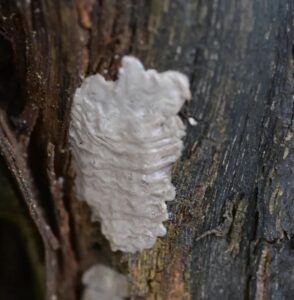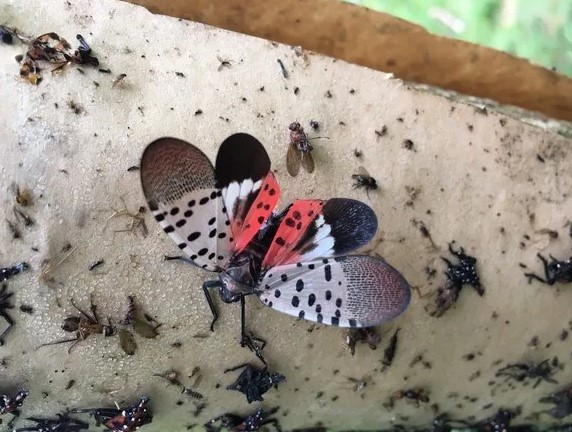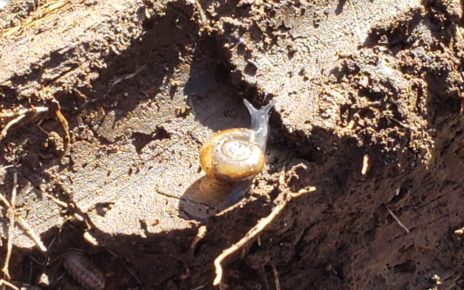I previously shared the lifecycle of the spotted lanternfly. Hopefully that helps you to identify these invasive pests.
The spotted lanternfly will go after lots of different plants but they prefer grapevines, maple trees, black walnut, birch, willow and other trees. They like to suck the sap out of trees which can ultimately cause the trees to die.
If you have a garden, you will want to keep an eye on your juicy fruits and vegetables such as cucumbers, peaches, grapes. tomatoes, etc. For instance, there have been reports that the spotted lanternflies will pierce the skin of these juicy veggies and fruits.
Here are some ideas on how to protect your veggies and fruits. You can use pvc hoop tunnels and mosquito netting to protect a garden area which I have previously don’t protect the brassica plant family from the cabbage moth. Another idea is to use fruit protection bags that have drawstrings and come in different sizes to individually protect the fruit.
When I saw a spotted lanternfly, I didn’t have time to take a photo. I happened to have my small hand held shovel so I smashed it. I put it in a plastic bag with water and liquid dish soap to make sure it was gone. I’ve heard that you can also spray a spotted lanternfly with neem oil to kill it. You just have to be careful when spraying a delicate plant with neem oil on a sunny day. Another important thing to do is to report the sighting. If you live in PA, you should report it to the PA Department of Agriculture. Based on the reports, they can identify the problem areas and the different types of plants affected by the spotted lanternfly.

In the fall and early winter, you should check your trees and any other hard objects like outdoor furniture, stones, vehicles for egg masses. I haven’t found any yet but you should keep checking so you don’t have a bunch of spotted lanternfly nymphs to deal with in the spring. They will lay up to 50 eggs at a time. The egg mass will be rectangular and will turn from cream to gray or light brown. In order to get rid of the eggs, use something like an old credit card, a paint scrapper or a spatula to scrape the eggs into a plastic bag with water and liquid dish soap.
I am sharing pictures of the spotted lanternfly and egg mass from the PA Department of Agriculture.




